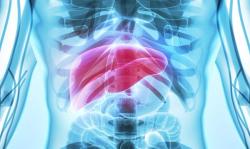
OR WAIT null SECS
Study Finds Traditional Risk Scores Miss Most Patients at Risk of First Heart Attack
New study finds ASCVD risk score often misses at-risk patients for first acute coronary syndrome, highlighting need for better prediction methods.
New research from investigators at the Icahn School of Medicine is highlighting the limitations of current risk prediction scores for identifying patients at risk of a first heart attack.
Results of the study, which used retrospective data to assess whether patients would have been classified as at risk before their first acute coronary syndrome event using traditional methods, concluded just 8% of patients would have been deemed as high risk using the Atherosclerotic Cardiovascular Disease (ASCVD) risk score, with 4 in 10 patients experiencing an event considered at low or no risk.
“It really shows that, overall, we would have missed a lot of patients and that there are significant limitations to the current screening methods,” explained presenting investigator Anna Mueller, MD, internal medicine resident at Icahn School of Medicine, in an interview with HCPLive. “Given that cardiovascular disease is still like the leading cause of mortality in the world, I think it just really highlights the fact that we need other types of screening methods.”
With an interest in assessing the effectiveness of the ASCVD risk score and chest pain as predictors for acute coronary syndrome events in a contemporary patient population, Mueller and a team of investigators designed their study as a retrospective analysis of data from all patients aged 65 years or younger presenting with their first acute coronary syndrome event at Mount Sinai Morningside from January 2020 to 2024. From the 166 patients identified for inclusion, investigators obtained demographic and clinical data for calculating individual ASCVD risk scores, including age, sex, lipid panel, blood pressure, medical history, and onset of symptoms.
The primary outcome of interest for the study was to determine whether a patient, if assessed 1 week prior to their initial acute coronary syndrome event, would have been identified as at risk and subsequently recommended lipid-lowering therapy or additional diagnostic testing.
Results of the study found 39% (n=64) of patients were considered low risk with an ASCVD risk score less than 5 or too low to calculate and just 8% (n=14) were considered at high risk (estimated risk score, >20%). Of note, only 6 patients who experienced an event had an LDL-C level above 190 mg/dL.
When assessing the predictive value of symptoms, investigators found 8% (n=14) experienced no symptoms prior to presentation for their event. Further analysis found 59% (n=98) experienced their first episode of symptoms within 48 hours and 11% (n=19)within 2 days to 1 week. Investigators highlighted 6% (n=10) had chest pain between a week and a month before their event, 4% (n=6) experienced chest pain a month to 3 months before their event, and 11% (n=19) experienced chest pain more than 3 months prior to their event.
For more on the study and its implications, check out our interview with Mueller and lead investigator Amir Ahmadi, MD, director of Cardiovascular CT and MRI Research, director of Valve Clinic, and director of Lipid Clinic at Mount Sinai St Luke’s Hospital.
Mueller and Ahmadi have no relevant financial disclosures of note.
References:
A Mueller, SK Konje, NB Barman, et al. Symptoms and ASCVD score fail to identify majority of the patients at risk of first myocardial infarction. Presented at: European Society of Cardiology Congress 2024. August 30 - September 2, 2024. London, UK.
Related Content:


